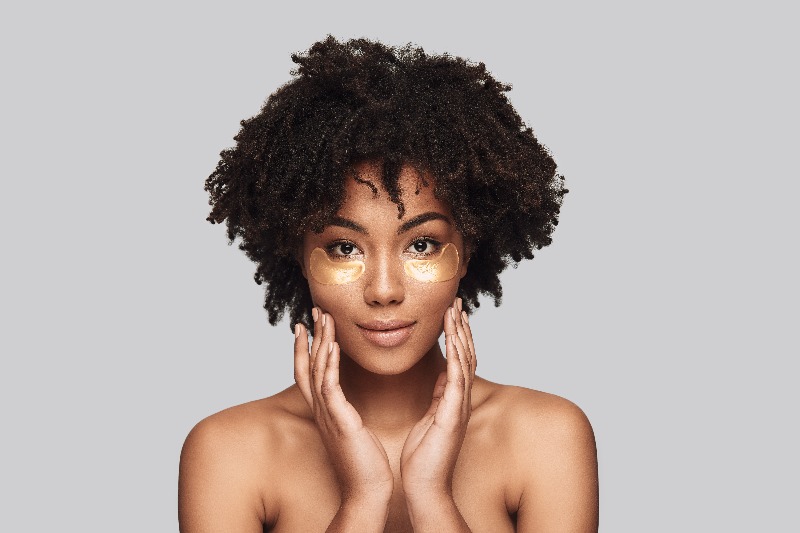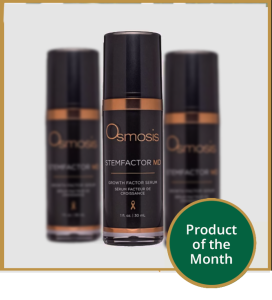Our skin changes with age. Fine lines on our face are usually the first signs that remind us of time passing. Then come more pronounced wrinkles, loss of facial glow and plumpness, and sagging skin. Though skin aging is inevitable, there is plenty we can do to postpone it.
Here we explain seven signs of aging skin you need to be aware of, so you can improve your lifestyle habits and prevent premature aging of the skin.

How Does Skin Change with Age?
Aging affects all three layers of the skin (epidermis, dermis, and subcutaneous layer), as well as the connective tissue in each layer that contains collagen and elastin.
The effects of aging on the skin include:
- Thinning of the epidermis and dermis, making the skin more translucent, paler, and more prone to damage.
- Thinning of subcutaneous protective fat layers, making the skin more susceptible to injuries and temperature changes. Subsequently, the face loses its volume.
- Reduction in the number of cells that contain melanin that protect our cells leading to discoloration, hypopigmentation, and hyperpigmentation.
- Loss of collagen and elastin in the connective tissue, making the skin less firm and flexible.
- Increased fragility of blood vessels under the skin, leading to easier bruising and bleeding under the skin. Wounds take longer to heal.
- Reduction in oil production, causing the skin to become dry and itchy.
- Reduction in thickness, moisture, and elasticity of the skin due to a drop in estrogen levels, especially in menopause.
Note: Collagen is a powerful protein responsible for keeping the skin elastic and youthful. Learn more about what collagen does for the skin and how to stimulate collagen synthesis.
What Are the 7 Signs of Aging Skin?
So, what happens to skin as we age?
Beginning in our 20s, our metabolic processes slow down, our body produces less collagen which gives the skin structure and elasticity, and the outer layers of the skin start thinning so we become more susceptible to environmental damage, such as sunrays and pollutants.
These changes are followed by the formation of these seven most common signs of aging skin:
1. Fine Lines and Wrinkles
Fine lines and wrinkles are usually the first sign of aging. They first appear in the form of fine lines between our brows and in the corners of our eyes. They deepen with age to become more pronounced lines on the forehead, around the eyes, nose, and mouth, and on the neck and hands.
2. Dull Skin
With slower metabolic processes, our cells take longer to renew. Dead skin cells accumulate on the skin surface, clogging pores and preventing the skin from moisturizing naturally. The result is dull-looking skin. Dull skin can also result from dehydration, stress, poor sleep, smoking, etc.
3. Age Spots
Increased sun exposure often results in age spots or sunspots. They are flat, dark spots on the face, neck, shoulders, hands, and feet. Age spots are the skin’s attempt to protect the body from too much sun. They usually appear in the 40s or 50s, but excessive UV exposure in younger age may lead to their appearance earlier.
Note: Learn how to remove age spots with over-the-counter products and noninvasive treatments.
4. Skin Tags
Skin tags are skin-colored growths that usually appear on the eyelids, neck, and skin folds. They vary in size, and they often hang off the skin, potentially creating discomfort because they can easily be pulled by nails or clothes. They appear with age and are harmless. They can be removed if they become an aesthetic or physical irritation.
5. Bruises
Blood vessels in skin layers become more fragile with age. The capillaries break more easily, causing bleeding and bruises under the skin. In addition, the thinning of the deepest, subcutaneous layer means the loss of protective fat pads, so the skin becomes more susceptible to injuries.
6. Dry, Itchy Skin
Sweat and oil glands produce less natural oils with age, leaving the skin dry, and sometimes itchy. Some environmental and lifestyle factors also contribute to dry skin, such as smoking, stress, and not drinking enough water.
Note: As your skin changes, so must your skin care routine. Dry skin needs a little extra moisture and gentle ingredients that won't irritate it. Find out which products to use for the best skin care routine for dry skin.
7. Loss of Face Volume and Sagging Skin
The loss of skin support structure (collagen, elastin, fat pads) starting in our 20s leads the way to the loss of facial fat in the following years. This results in hollow under-eye areas and cheekbones, and gravity causing the skin on the face and neck to sag.
If you are wondering when to start using anti-aging products, wrinkles, age spots, loss of face volume, and sagging skin are telltale signs you should get serious about anti-aging skincare.
Note: Find out how to get rid of sunken eyes via minor lifestyle changes, over-the-counter products, and treatments.
What Causes Aging of the Skin?
Skin aging factors are grouped into three main categories: genetics, environmental factors, and lifestyle habits.
Our genes and hormones dictate aging on the cellular level, so we can’t change when our cells and metabolism start to slow down. However, we can influence the following environmental and lifestyle factors that cause premature aging skin.
UV Ray Exposure
Skin experts believe sun exposure is the main cause of premature skin aging. UV rays accelerate the process of collagen breakdown, causing the skin to lose firmness and elasticity. Though wrinkles or age spots may not appear right away, excessive exposure to UV rays inevitably leads to premature skin aging.
Smoking
Smoking limits the amount of oxygen the skin receives, making it look hyperpigmented and wrinkled.
Diet
Some studies show that a diet high in sugars and carbs leads to premature skin aging. Sugars cause inflammatory processes in the organism and produce damaging free radicals that speed up the breakdown of the skin’s structure building blocks.
Sleep
The skin needs regular 7-9 hours of uninterrupted sleep during the night to rebuild collagen and reduce damage from outside pollutants. Studies show the loss of proper sleep cycles is linked to increased signs of skin aging and weakened skin barrier function, manifesting as premature wrinkles and age spots, dark under-eye circles, swollen eyes, and pale skin.
Stress
When we experience stressful situations, our body excessively produces cortisol, a stress hormone, that speeds up the process of DNA damage and contributes to faster skin aging.
Facial Movements
Repetitive facial movements such as squinting, frowning, and smiling form wrinkles. That is why modern cosmetic treatments such as Botox work on preventing nerves to contract wrinkle-forming muscles.
How to Delay the Appearance of Common Signs of Skin Aging?
Acting on environmental factors that cause premature aging and adopting healthier lifestyle habits can greatly improve our skin tone and texture. Here’s what to do:
Avoid UV Rays
Rule number one of anti-aging skin care is to ALWAYS wear sunscreen. That means in winter, too. The damaging UVA and UVB rays penetrate the skin even on cloudy days, so it’s important to protect the skin from the sun’s damaging effects. Wear sunglasses to protect the area around your eyes and to avoid squinting. If possible, don’t go out in the sun during the brightest hours.
Note: Learn how to choose a sunscreen for your skin type.
Eat Antioxidant-Rich Foods
Studies show that antioxidants in food help fight free radicals that damage our skin. Foods that help repair our skin are fresh fruits and vegetables, nuts, whole grains, and fish.
Note: Food is not the only way to reap the benefits of antioxidants. Learn more about antioxidants in skin care and how to incorporate them into your daily routines.
Drink Enough Water
The skin needs to be hydrated from the inside, so it is important to drink enough water. There is no exact definition of “enough water”, but a general recommendation is to drink water in the amount of half the body’s weight in ounces every day.
Stop Smoking
Easier said than done, but if you want to avoid looking years older than you are, quitting smoking is a must.
Limit Wrinkle-Forming Facial Expressions
Never stop laughing, but try to limit squinting, frowning, and other repetitive facial movements that contribute to lines forming around the eyes, mouth, and on your forehead.
Avoid Stress
Another “easier said than done” recommendation, but it’s important to fight stress for health in general, not just for youthful and healthy-looking skin. Physical activity is the quickest way to relieve stress, and it can be anything from yoga or jogging, to gardening or house repairs.
Regulate Your Sleep
Proper sleep is important for all health-related issues, including skin aging. If you have difficulty falling or staying asleep, try sleep-inducing tactics before you go to bed, such as meditation, yoga, relaxing massage, herbal teas, soothing music, etc. Don’t take naps during the day.
Use Anti-Aging Skin Care Properly
Start an anti-aging skin care routine in your 20s. If you have already passed that point, know that it’s never too late to rejuvenate aging skin. However, starting an anti-aging skin care routine in your 40s means more products and cosmetic treatments.
Do your research to properly use anti-aging products because inadequate use (e.g., using serums without cleansing the skin first) or using products with too many heavy chemicals can do more damage than good.
Conclusion
Skin aging is inevitable, but let’s not help the process. Now that you know what the most common signs of aging skin are, you can start changing your lifestyle habits and shielding your skin from damaging outside factors.
Instead of looking a decade older, help your skin stay in its 20s or 30s for as long as possible. Start by treating yourself with a skincare treatment at Vibrant Skin Bar.




